Whether you’re headed to the range or stocking your car with first aid supplies on the go, there’s one important element you want to make sure you include…
A tourniquet.
Let’s be real, tourniquets can be a little on the pricey side, and you want to make sure you’re getting the real deal. That can be tough when there are tons of options on the market, but that’s why you have us.
We’re going to talk about tourniquets — dispel some myths about their use and run through some of our favorites.
THE QUICK LIST
-
Editor’s Pick
-
Runner-Up
-
Most Versatile
-
Best Budget Holder
-
Runner-Up Holder
-
Editor’s Pick Holder
Table of Contents
Loading…
Why You Should Trust Us
I get it, I get it. What does Pew Pew Tactical know about medical stuff?
Well, we’re not just about gun gear around here…we have all sorts of other nerdy interests.
For me, it’s all about first aid. I’m an American Heart Association Basic Life Support Instructor and have been for over 20 years. I spend my free time teaching first aid and CPR to civilians through the American Heart Association.
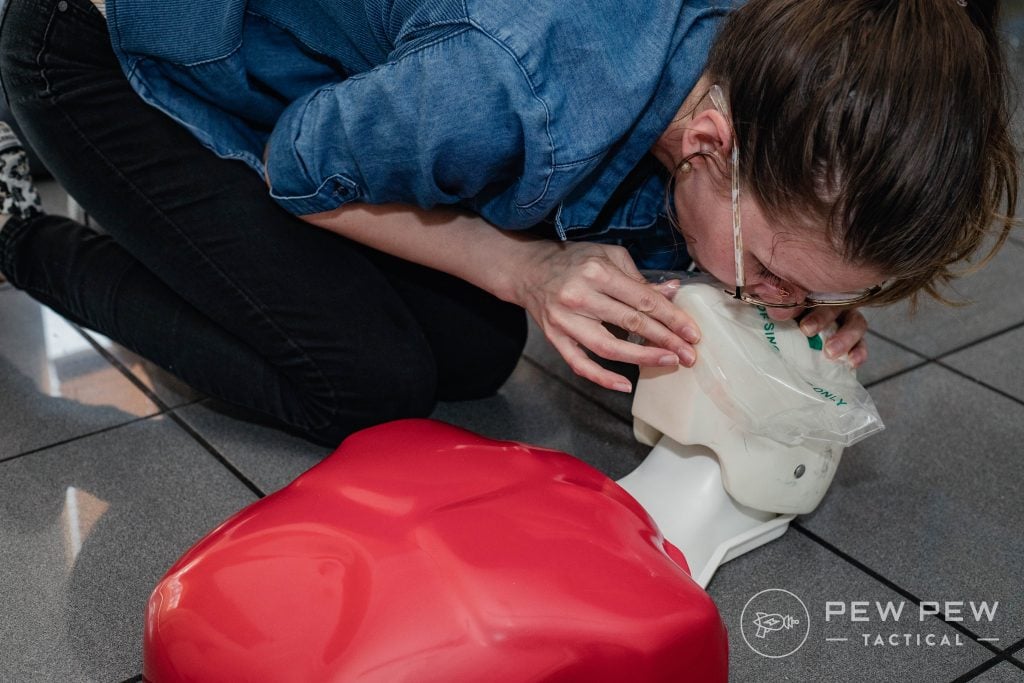
That means I take regular training to make sure I am up-to-date on the most recent literature, research, and tactics when it comes to first aid, CPR, and life-saving measures.
I write a lot of PPT’s first aid articles — like our Best First Aid Classes, Best CPR Masks, and even some first aid kit reviews. I’ve also had the chance to appear on the Civilian Medical Podcast to talk about my training and first aid in general.
So with that out of the way…let’s talk tourniquets.
Are Tourniquets Dangerous?
There are a lot of myths surrounding tourniquets and whether these tools can cause more damage than they help.
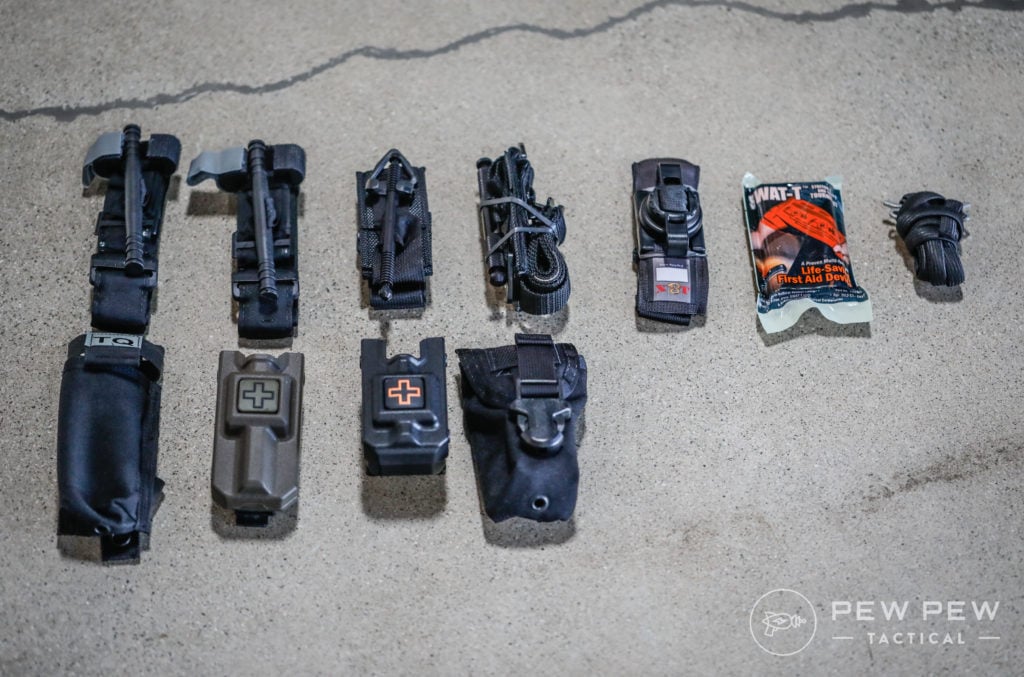
But let me set the record straight…tourniquets are life-saving devices that help control massive blood loss and literally keep people alive.
Like any tool, there are right ways and wrong ways to use them…which is why I recommend taking a first aid class to get your skills down.
But that said, unless you wrap it around someone’s neck (definitely don’t do that), tourniquets are perfectly safe to use to help stop blood loss.
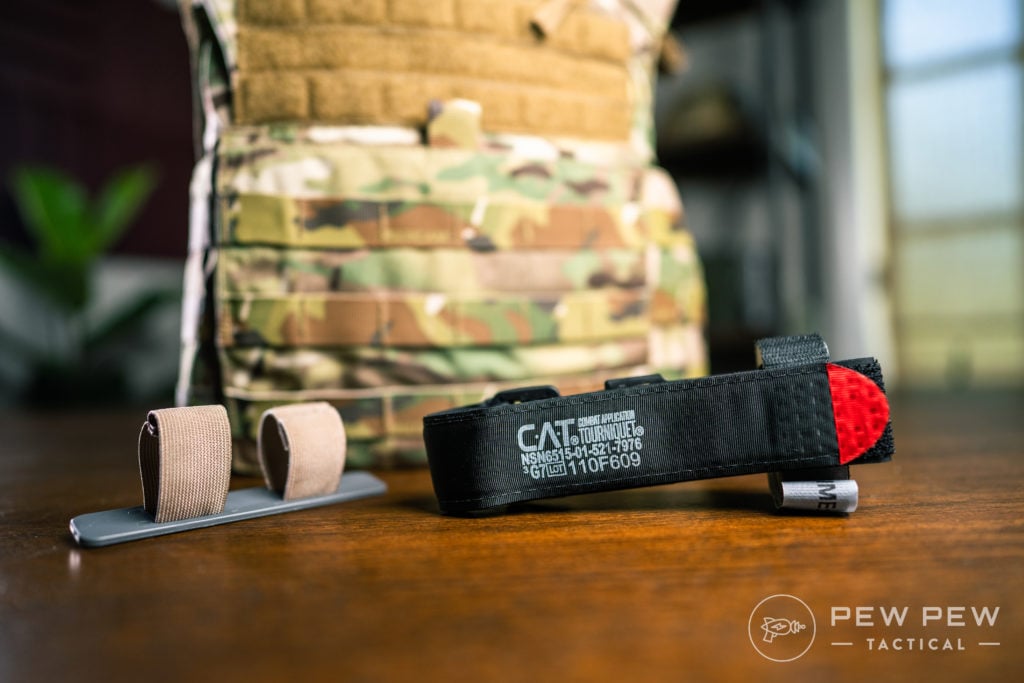
We always like to refer to the experts, which in this case is the Committee on Tactical Combat Casualty Care (CoTCCC, spoken as “Tee-Cee-Three”).
This group was created by U.S. Special Operations Command in the early 2000s and leads the way when it comes to prehospital combat care.
They use the battlefield to study and analyze the best means of keeping people alive, and they’ve stated tourniquets are a great way to do so.
Types of Tourniquets
You might think tourniquets are new, but they’ve actually been around for hundreds of years. Their earliest known use dates back to 1674.
They began as sticks and bandages cobbled together by battlefield surgeons.
They’ve since evolved into modern-day tourniquets that offer a more compact and convenient (and sanitary) way to control massive bleeding.
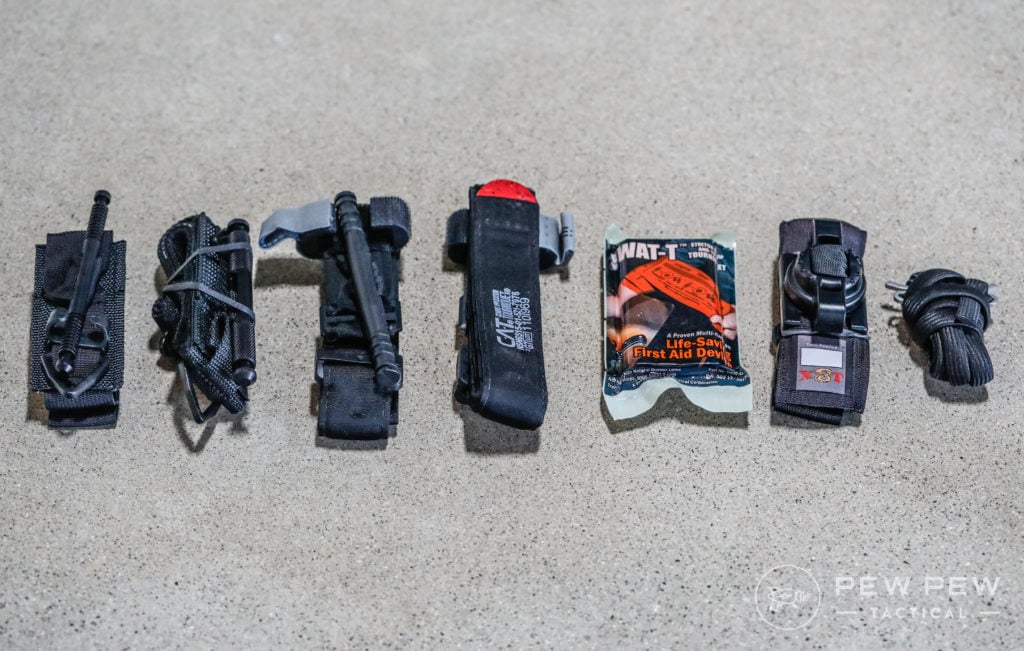
There are a few styles of tourniquets, but the main ones you will encounter are the SOF, CAT, SWAT-T, and RATS.
All use a similar principle of cutting off blood flow to reduce bleeding, but they achieve that in different ways. Some, like the CAT and SOF use a windlass to restrict bleeding. Others just pressure brought about by winding the material tightly around the area.
Each has its pros and cons, and we’ll get into that when we talk recommendations. So, let’s take a look at the best tourniquets on the market.
Best Tourniquets
1. CAT Gen 7
The standout tourniquet that will probably seem the most familiar is the CAT or Combat Application Tourniquet. It’s one of the most popular TQs and is also the gold standard.
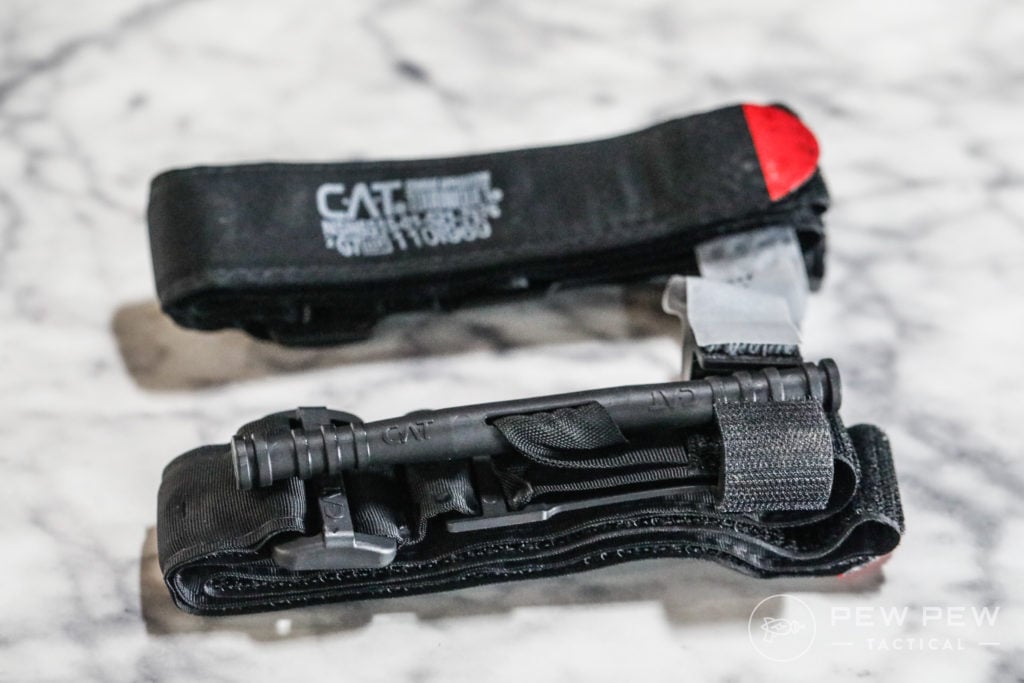
This version uses an adjustable strap that you pull to tighten and latch in place with Velcro. It uses a plastic windlass to further tighten down the level you need to stop bleeding. The windlass is easy to use, and the CAT also has a little plastic area to catch it and keep it in place.
I dig the CAT because the white Velcro can be used to mark what time you placed the tourniquet — a must if you use one. It’s imperative that medical professionals know how long the tourniquet has been there.
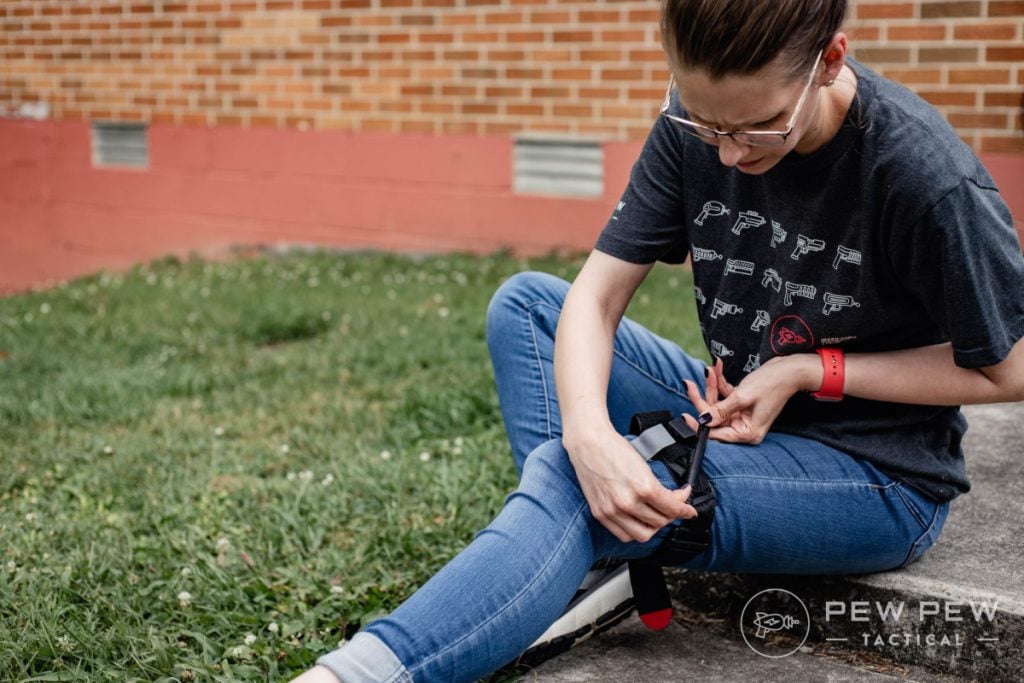
The windlass locks into one of two hooks on the side of the TQ, which is then secured by the white strap.
I love the CAT because it is compact and easy to tuck into a backpack or purse. Even better, it can be easily applied to yourself with one hand.
That’s why these bad boys are so popular!
For me, the CAT is my go-to. I have one in my car kit, my range bag, IFAK, and even carry one in my purse.
Prices accurate at time of writing
Prices accurate at time of writing
-
25% off all OAKLEY products - OAKLEY25
Copied! Visit Merchant
What’s your take on the CAT? Rate it below!
2. SOF Tourniquet
So you like the CAT, but maybe you want something slightly different…the SOF is your guy. It’s an alternative offered by Tactical Medical Solutions.
This also uses a windlass to get that tightness you need to stop bleeding, but it opts for a metal, textured windlass over the CAT’s plastic one. The plus side to this is it’s really easy to grab and use — especially if you are using one-handed or your hands are slippery.
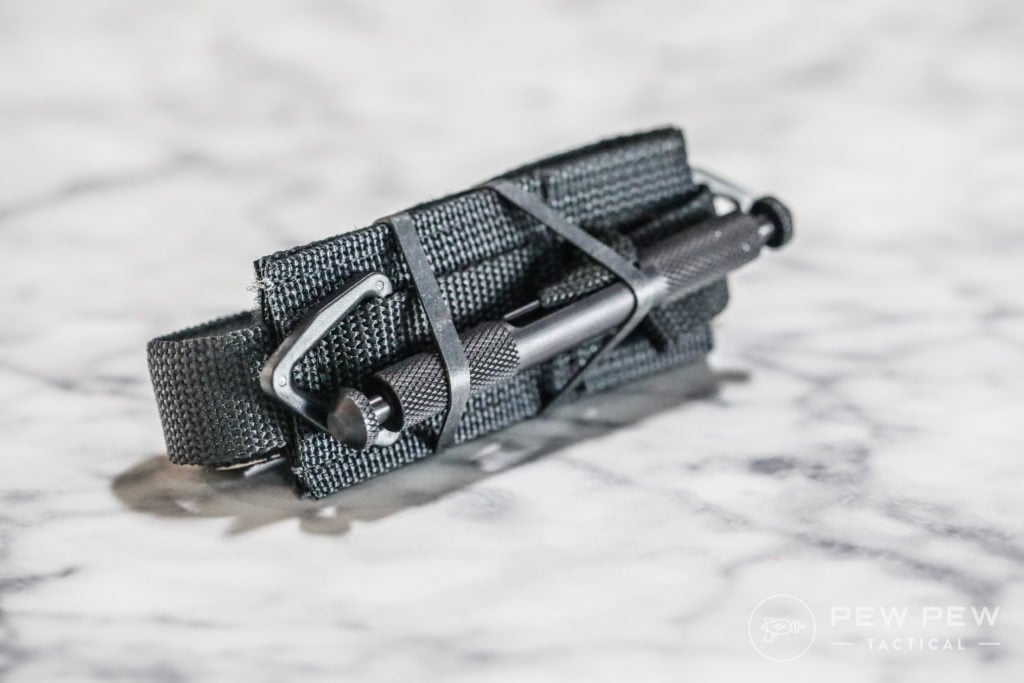
I feel like it’s a little more compact than the CAT. The metal latch is sturdy and easy to use, while its friction buckle is rock solid.
There are two types — a standard and a wide version with the wide being slightly more expensive than the standard.
Overall, this is a great option if you want a little more durability in the windlass and something that is slightly smaller.
Prices accurate at time of writing
Prices accurate at time of writing
-
25% off all OAKLEY products - OAKLEY25
Copied! Visit Merchant
3. R.A.T.S (Rapid Application Tourniquet System)
So, the RATS can be sorta controversial, depending on who you talk to, but it’s still an option and a small one if space-saving is an issue.
Ideally, with a tourniquet, you want something wider because it’s less likely to cut the skin and cause other ancillary issues. But sometimes, there’s just not enough space in your kit for a CAT or SOF.
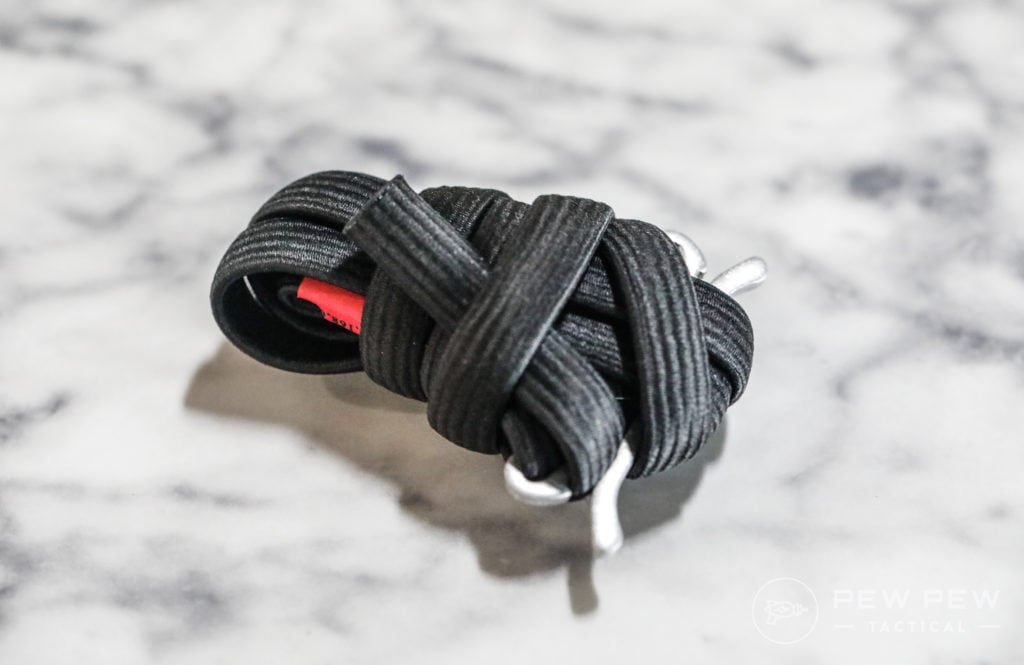
Not to mention, the RATS is cheaper than the other two options.
Spoiler alert…it hurts! I mean, all tourniquets hurt at some point, but the RATS really hurts.
It’s basically a bungee cord that wraps around the limb until tight. A metal piece secures the cord and keeps things in place.
I personally find it a bit more complicated than the CAT or SOF, so make sure you devote some time to learning how to use it properly.
Prices accurate at time of writing
Prices accurate at time of writing
-
25% off all OAKLEY products - OAKLEY25
Copied! Visit Merchant
5. SWAT-T
The SWAT-T is similar to the RATS in that there’s no windlass, but instead of a bungee, though, it uses a rubber band material (that oddly smells like vanilla…still can’t figure that one out.)
It also doesn’t have any sort of locking mechanism, which I am not a fan of. I want to make sure the TQ doesn’t budge, and there’s no way to do that with this model.
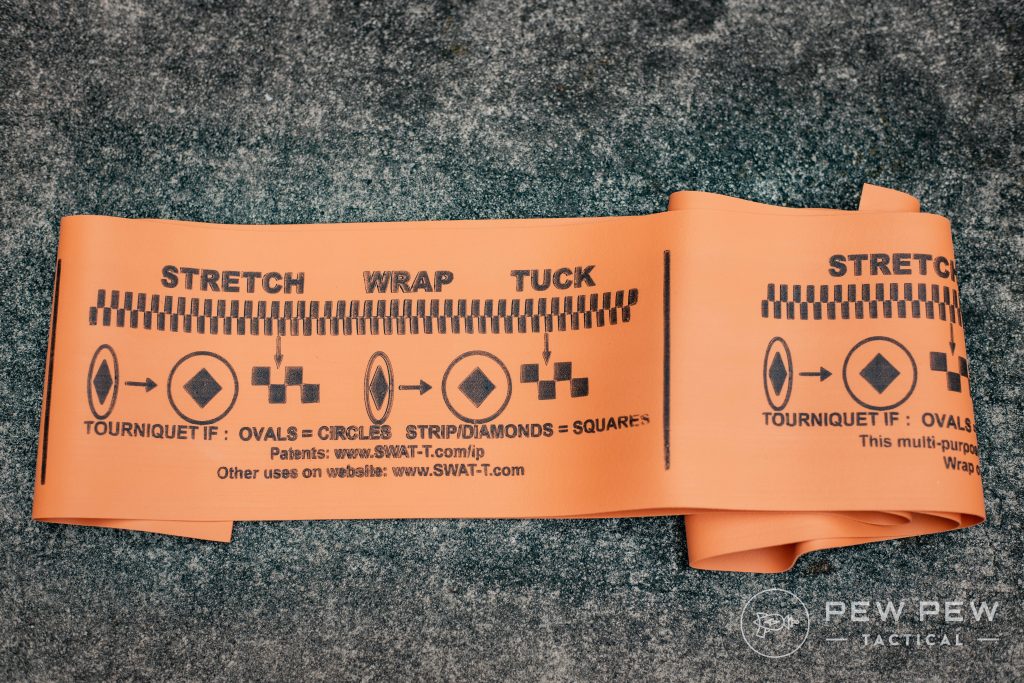
That said, the instructions are printed on it, so it’s easy to understand. Basically, you wrap until you see the square shapes form diamonds — then you know it’s tight enough.
It can also be used as a pressure dressing if needed, so it’s versatile.
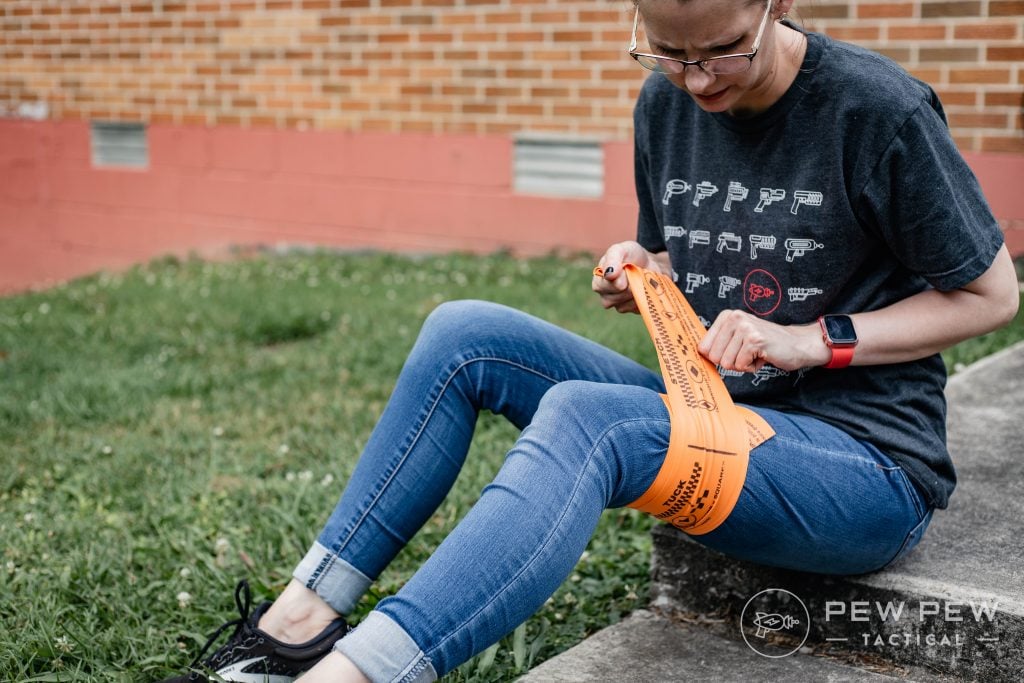
It’s not the easiest to use, especially on yourself, so again, I really don’t prefer this one. I think it’s worth it to splurge on a CAT or SOF instead.
Prices accurate at time of writing
Prices accurate at time of writing
-
25% off all OAKLEY products - OAKLEY25
Copied! Visit Merchant
Beware of Tourniquet Frauds
Yes, there are knockoffs and frauds out there, and when it comes to life-saving tools, you want the real deal.

For that reason, I tend to stay away from Amazon for this reason. It’s hard to know what’s the good stuff and what’s fake. (Clue: if a TQ is under $15…it’s probably a fake. You gotta pay for quality.)
Instead, I shop with reputable dealers that I know I can trust, like:
Best Tourniquet Holders
So you have a tourniquet…now what about holders for them?
It’s a lot more convenient to slap them in their own holster, if you will, and put them someplace accessible than it is to dig through your pack for them.
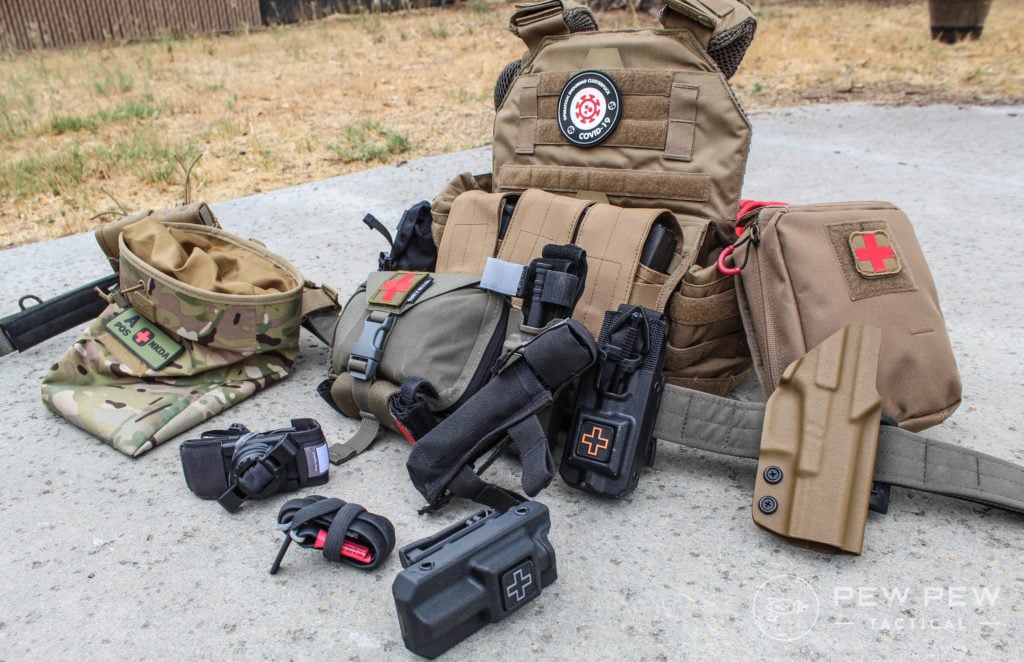
So let’s look at some decent options for on-the-go.
1. Blue Force Gear Tourniquet Now! Strap
The BFG Tourniquet NOW! is a pretty simple and straightforward way to carry your tourniquet.
It works with both CAT and SOF tourniquets.
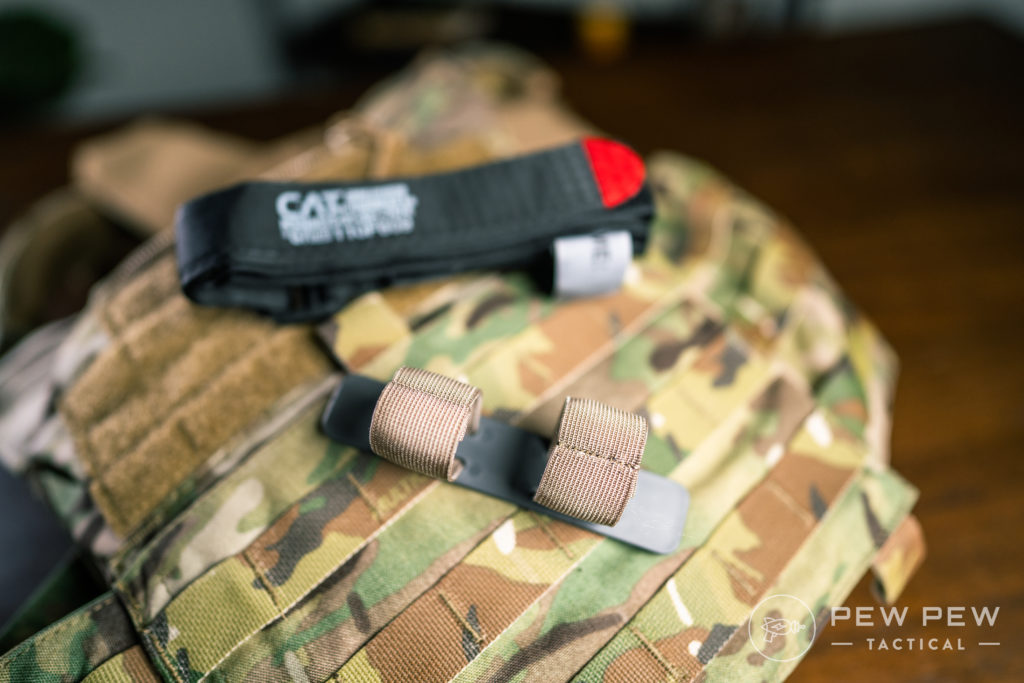
I like that it’s easy to use and no-muss, no-fuss. That said, it’s not the quickest option.
Prices accurate at time of writing
Prices accurate at time of writing
-
25% off all OAKLEY products - OAKLEY25
Copied! Visit Merchant
2. NAR CAT-7 Tourniquet Holder
If you carry a CAT-7, then the NAR is a great option.
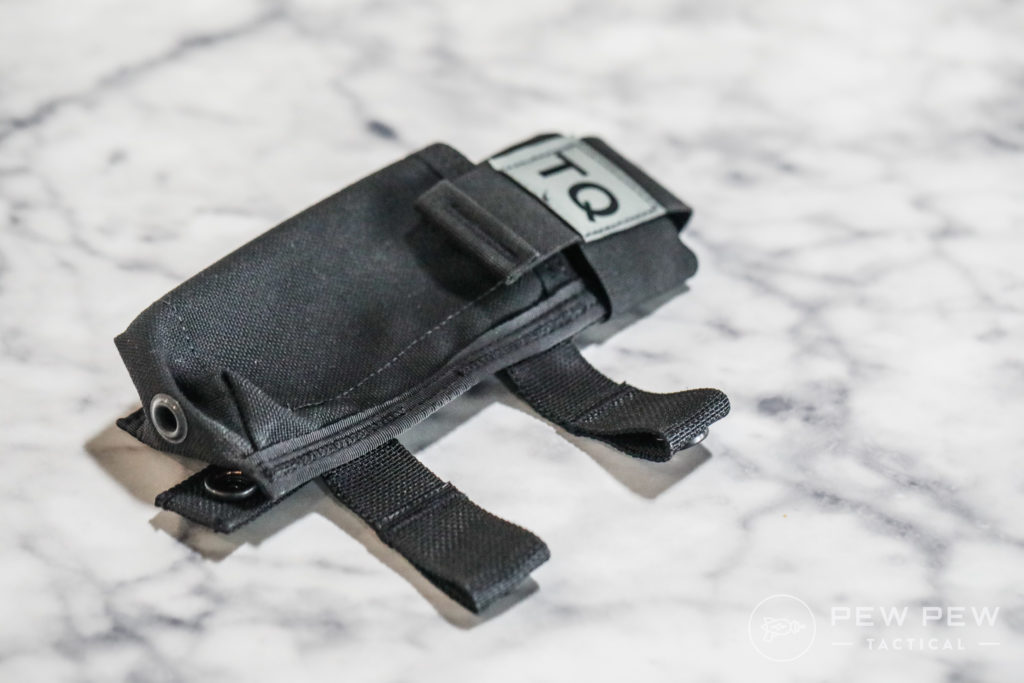
It uses MOLLE and is really simple and easy to attach to a range bag. I really like that the TQ is prominent because that means it’s easy to see and understand what it holds.
It’s also a lot quicker to access than the BFG above.
Prices accurate at time of writing
Prices accurate at time of writing
-
25% off all OAKLEY products - OAKLEY25
Copied! Visit Merchant
3. Blue Alpha Tourniquet Holder
Another really solid option if you’re looking for a slim and simple holder is the Blue Alpha Tourniquet Holder.
We’re big fans of Blue Alpha’s belts, and they bring that same level of quality and durability to their TQ holders.
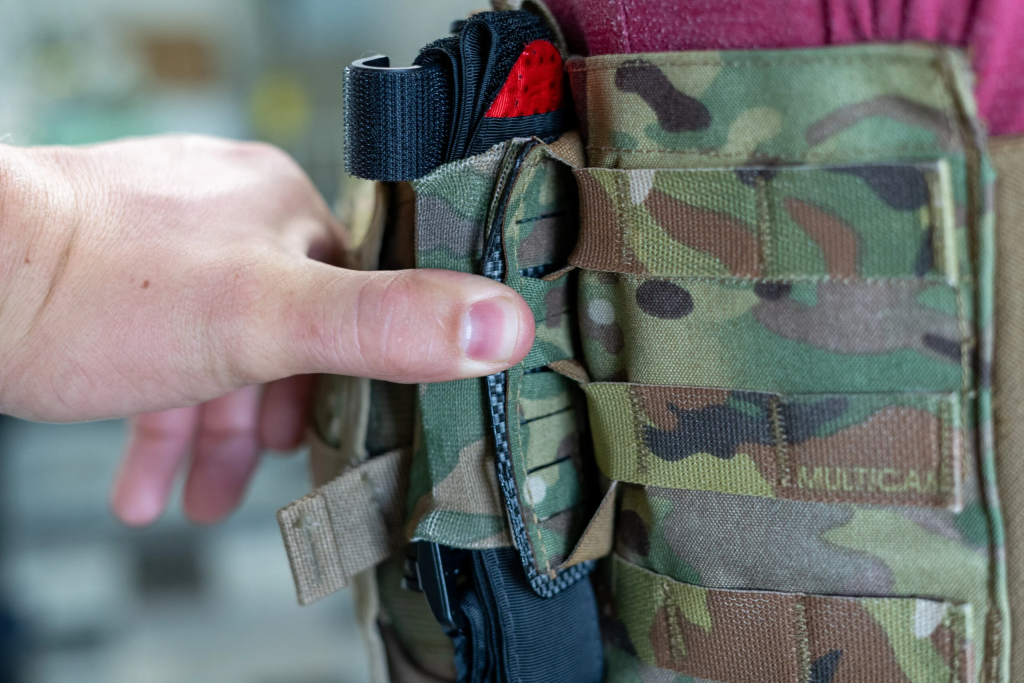
The holders are MOLLE compatible and also mount on belts either horizontally or vertically. They can even mount under a plate carrier using an optional add-on known as the Dangler.
It’s compatible with both CAT and SOF-style tourniquets. What I really like about these is it has a spot for a Sharpie, so you can note the time of application.
The base model retails for $29, but for an extra $30, you can get the whole shebang with a CAT tourniquet, holder, and Sharpie.
Prices accurate at time of writing
Prices accurate at time of writing
-
25% off all OAKLEY products - OAKLEY25
Copied! Visit Merchant
4. Eleven 10 Rigid TQ Case
If you prefer something a bit more rigid, the Eleven 10 is solid.
It works like a holster for SOF, SOF TT-W, and CAT-7 TQs. Not to mention, this thing gives you instant access to your tourniquet.
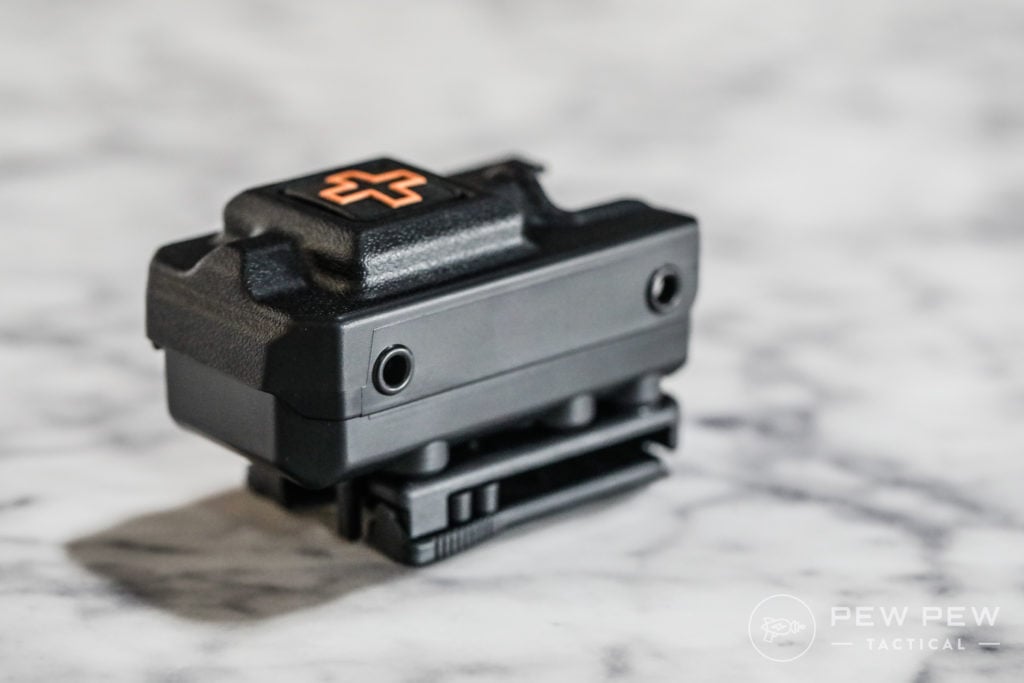
You get some color options with this as well!
If you need something that can take a beating, this one definitely passes that test.
Prices accurate at time of writing
Prices accurate at time of writing
-
25% off all OAKLEY products - OAKLEY25
Copied! Visit Merchant
Final Thoughts
A tourniquet is a must-have for any first aid kit, range bag, or bugout bag. These handy tools literally save lives daily!
While I prefer the CAT or RATS, the other models we listed are decent options as well.

And remember, it’s also a good idea to invest in training!
Sources
- Journal of Vascular Surgery
- Committee on Tactical Combat Casualty Care (CoTCCC)
- CoTCCC Recommended Devices & Adjuncts
What’s your go-to tourniquet? Let us know in the comments below. Don’t forget to check our reviews of the best IFAK kits out there to keep building your emergency medical kit.

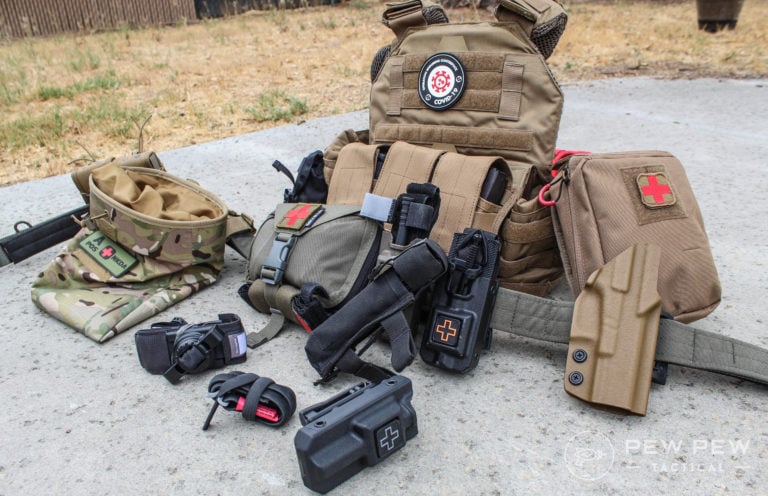

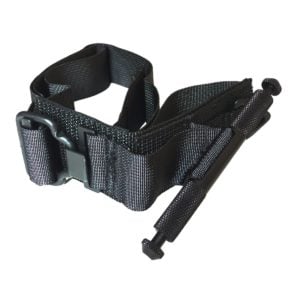

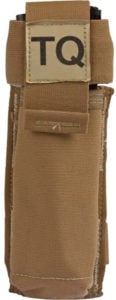

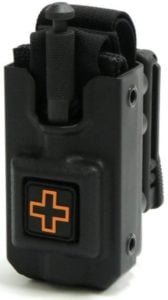







24 Leave a Reply
Funny thing is I was recently researching TQ holders and still have the same question even after reading your article: what about a good, in-pocket, slim holder. I often wear tactical jeans which have side pockets big enough for a 30 round PMAG. I also use a NeoMag carrier for my P365 mag. I was looking for essentially the same for my TQ... something slim and lightweight that's not much bigger than the TQ itself but with a decent pocket-knife style clip that I could slide into a spare pocket. But it seems everything out there assumes you want MOLLE attachments like the Blue Alpha or are bulky like the Eleven 10 Rigid case. Most seem designed to mounting to a pack or belt. Anyone know of a slim, lightweight solution with a pocket clip that's basically like a NeoMag but for a TQ?
As a former Paramedic and Retired Trauma RN, I keep mainly the NAR CAT 7s on my plate carrier and in my Jump Bag. I also keep a couple of the SWAT Ts because they work better in some applications.
Holder wise, I keep one in the BFG Strap Holder on my Carrier, and the others in various soft TQ Holders. I've one of the Rigids sitting in a drawer because it's too tight of a squeeze to get a CAT TQ in there. I replaced the RATS that came with my IFAK with a CAT. RATs suck, and take a lot of practice to use one handed. On my Jump Bag, one outside pocket holds 2 SWAT Ts and 4 CATS.
So if our Community Team gets called out, I've a total of 10 TQs between Carrier, belt and jump bag.
We keep track of the Expiration Dates, and any TQs past date just get used for group and self training.
Thankfully, I've staggered my purchases enough I don't have to replace them all at once, or that'd be a chunk if change.
I may catch some flak for this opinion but I think that the SAM XT is another solid option. I will still prefer the CAT all day long but the SAM XT has an I retesting mechanism that makes it a bit easier for some people to use on themselves especially. I’ve worked EMS for over ten years now and I would personally trust the SAM XT on myself if it came down to it.
Spent two days with Dark Angel Medical in their DART class. We used a few of these on each other and selves. Ended up going with the CAT. However, the SAM-XT was interesting with that ratcheting mechanism. Gave it a serious look. It seemed a bit easier one handed. Ultimately the simplicity and the size of the CAT won me over. Keep It Simple Silly. Both were able to stop circulation quickly in rushed, simulated stressful situation (I know, never as stressful as the real thing if you actually see blood squirting out of your own limb).
Certified EMT's and Paramedics in the field use windlass tourniquets. I'm an EMT and it's what I carry. I prefer to have a high visibility color to make it extremely easy for the doctors and nurses to find once my patient gets to the hospital. Mine are blaze orange and can be seen from orbit.
I'm glad you pointed out the fakes on Amazon. I had ordered 4 knock-offs without realizing it. I had to cancel the order and find the genuine North American Rescue ones... Thanks for the help!
A CAT will work on a limb that’s the size of a quarter. The RATS really has no business being used on children when the CAT will work. Had this convo with a number of trauma doctors and this was their advice.
RATS should be limited to pets
Good article. the newer version of the NAR TQ holder (elastic) is a very good option for carry too. Use one on my duty belt and it's been awesome.
The SWAT-T requires two free hands to apply by a trained person. I used one during a shooter drill and found the windlass type to be superior. Any tourniquet in your IFAK needs to be the type a person can easily apply to themselves. M Moyers said it well regarding the fine motor skills, stay away from gimmicks. Regarding tourniquet reviews on Amazon: Unless the user has had to use a tourniquet on a bleeder, how would they know if they had a good tourniquet? Last comment, a tourniquet should look like a tourniquet because some bystander may use yours to save your life when you are unable to.
I have used both the CAT and the SOFTT-W downrange on real, bleeding-out patients. They are both solid options, but I'd go with the CAT if I had to pick just one. The RATS is garbage, and, as the author pointed out, the only thing the SWAT-T is good for is K9. I also would avoid that X8T contraption. When the fit hits the shan, one of the first things to go is your fine motor skills. You want a tourniquet that you can successfully apply with gross motor movements, not something that you have to pinch and turn like a radio dial.
The CAT is inexpensive and it works. I've used them on femoral bleeds on very muscular infantrymen, even if I needed to use 2, $50 is cheap when it comes to your life. Tactical medical equipment is NOT where you want to save pennies. It makes me scream inside when I see these guys with a custom-built Aero Precision AR, Trijicon optics, Arc'teryx kit...and a $5 Chinese knock-off TQ. (he probably also has tampons in his "blow out" kit)
I concur.
Well said thanks for advice.
We carried tampons in the early days of the wars. We also used nylon webbing and small metal rods for tourniquets. We didn’t have the luxury of IFAKs and CAT tourniquets issued to everyone. We didn’t have Hemostatic bandages and powders available they way they are now. You guys that dump on what other people have are obviously lucky enough that you never had to deal with ‘make do’ med kits.
You should have super absorbent tampons in your IFAK and blow out kit. They are better for packing puncture/bullet wounds than gauze rolls, 4x4's, Israeli bandages, and hemostatic agents. Plus, tampons cost a lot less. The pros (civilian EMT's and Paramedics) don't use hemostatic agents because trauma docs and nurses hate the cleanup and the resulting complications from it bonding to the flesh in the wound.
Hey Krush, thanks for reading! Wanted to pop in though and address the tampon thing. It's actually a myth with no peer-reviewed research backing. They aren't designed for wound packing and can't handle the amount of blood in most gunshot wound situations. They don't do much aside from helping with menstruation. Mountain Man Medical did a great article on this topic that's worth a read (https://www.mountainmanmedical.com/time-to-talk-tactical-tampons/). Dr. Alton over at Doom and Bloom also addressed this, concluding that gauze, pressure dressings, and hemostatic bandages are better served for puncture and gunshot wounds than tampons. (https://www.doomandbloom.net/the-tactical-tampon/)
Hi Jacki, thank you for the correction. I was in a hurry and neglected to proof read before pushing the reply button. I should clarify that my intent was to inform that tampons can be used for packing minor puncture/bullet wounds that do not involve arterial dissection and/or internal organs where a tourniquet, pressure dressings, and occlusive dressings are best suited. I've worked under several medical directors that don't like hemostatic agents and hemostatic bandages and will not give standing orders to use them for the EMT's and Paramedics under their direction.
Good article! Yes, really watch Amazon for Chinese knockoffs on CAT TQ's For the real deal they are about the same price at many reputable on line medical retailers. On the other hand when you are talking about carriers; my opinion is in most cases the Chinese knock offs are considerably cheaper and work fine. I have 2 CAT brand and 3 or 4 Chinese carriers. Also if you are wanting a training CAT style TQ the Chinese knock offs will do and save quite a bit of money. (Just make sure you mark them as trainers)
Anyone have an opinion on Recon Medical tourniquets that are $15? They have a metal windlass and there are pretty good reviews on Amazon.
One additional advantage of the SOF-T WIDE is that they can be strung together in series, if you have to TW a very large thigh, for example (like on an NHL player).
+1 on Skip Kirkwood comment. I live in the South and quite a number of folks I am around at ranges run in the +size and stringing together capability became very important to me.
Due to the potential degradation in the physical and mechanical properties of nylon when exposed to UV rays from the sun, I think a fully-enclosed TQ pouch is a better option. Something like ITS's TourniQuick Rapid Deployment Pouch
I really like the RATS tourniquet. I think it's way better than the CAT. You can put the RATs on with 1 hand and it can expand and/or contract with the body.
The RATS tourniquet is not in the same class as the other two which are approved by the Co-TCCC. This has been argued to death on the interwebs. The RATS is in no way superior other than you can wear it like a belt and look like super-Timmy out in town.
+1 for "Super Timmy."